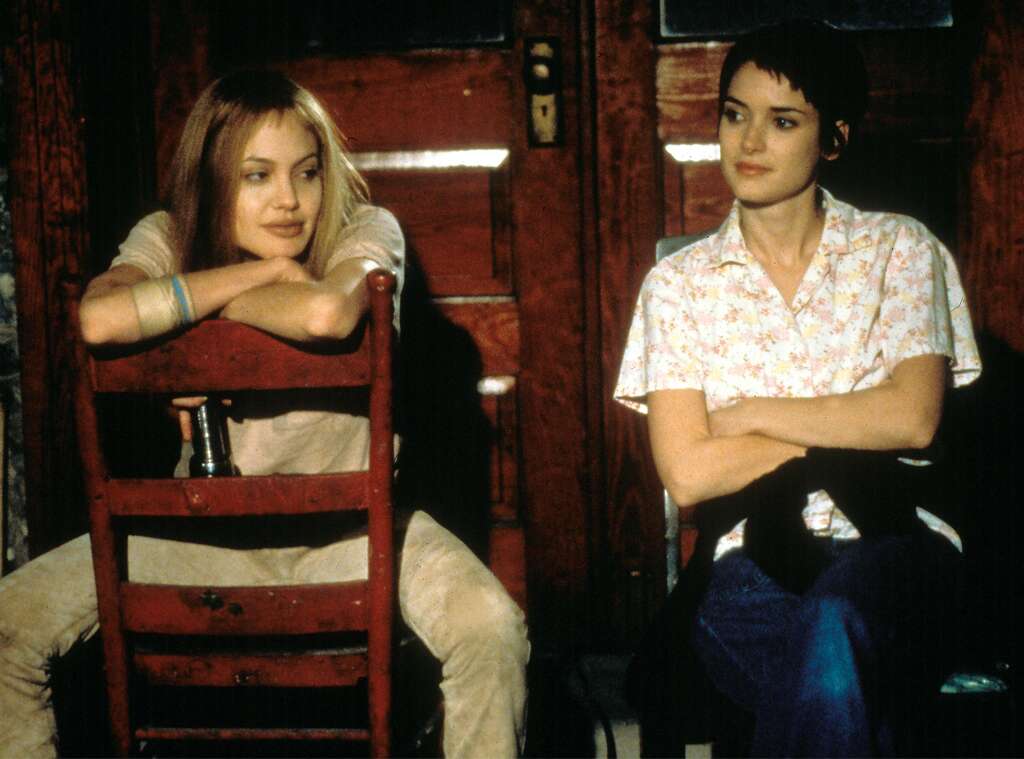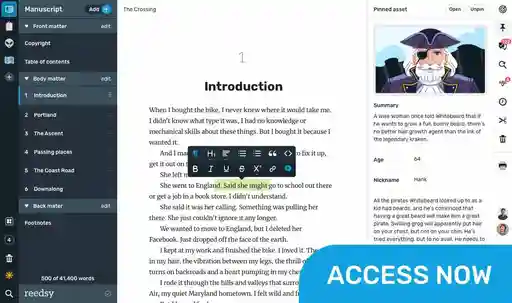Guides • Perfecting your Craft
Last updated on Oct 15, 2025
21 Memoir Examples to Inspire Your Own
Martin Cavannagh
Head of Content at Reedsy, Martin has spent over eight years helping writers turn their ambitions into reality. As a voice in the indie publishing space, he has written for a number of outlets and spoken at conferences, including the 2024 Writers Summit at the London Book Fair.
View profile →Writing a memoir is a daunting endeavor for any author: how do you condense your entire life story into a mere couple hundred pages? Of course, you'll find plenty of online guides that will help you write a memoir by leading you through the steps. But other times that old adage “show, don’t tell” holds true, and it’s most helpful to look at other memoir examples to get started.
If that’s the case for you, we’ve got you covered with 21 memoir examples to give you an idea of the types of memoirs that have sold well. Ready to roll up your sleeves and dive in?
The autobiographical memoir
The autobiographical memoir — a retelling of one’s life, from beginning to present times — is probably the standard format that jumps to most people’s minds when they think of this genre.
At first glance, it might seem like a straightforward recount of your past. However, don’t be deceived! As you’ll be able to tell from the examples below, this type of memoir shines based on three things: the strength of the author’s story, the strength of the story’s structure, and the strength of the author’s voice.
Q: How might authors start an autobiography with a compelling hook?
Suggested answer
First, the autobiography should have a plot and a sense of the author changing over time as a good character would in a successful novel. And the core idea of that plot can be revealed from the earliest pages.
Not "I was born in Philadelphia in the spring of 1961."
But "I was born at Albert Einstein Hospital in Philadelphia the day Alan Shepard blasted off to become the first American in space, and I was named for him and John Glenn."
Both of these are potential openers for the autobiography of my husband, Glenn Alan, who became a physics professor and a space enthusiast.
Another effective opening can be a description of the time and place and family into which you were born or first experienced something appropriate for the plot line of the autobiography--when your lisp shamed you in first grade or when your life really began as you escaped your abusive home at sixteen.
And like the prologue of a novel, your opening scene could be a significant event from your adulthood, even very recent, with the rest of the autobiography then backtracking to earlier days.
Ask yourself if there's a scene from your life that sums up everything that led to a crucial decision, or when you finally basked in the glory you'd earned through much hardship and hard work. Consider pausing that scene at a crucial moment and then returning to it as the culmination of the autobiography as it closes.
Cindy is available to hire on Reedsy ⏺
Instead of beginning at the beginning, i.e. starting straight off with your childhood and parents etc., an interesting way to start is by describing a key event or experience in your life, and relating that directly or indirectly to your overall story. Then you can proceed to the usual chronological order of things.
This is quite a common approach used in recent decades for famous people's autobiographies. It grabs the reader's attention and encourages them to read further.
John is available to hire on Reedsy ⏺
I always tell my memoir authors that the most important water a memoir opening has to carry is to launch a charm offensive. Make friends with the reader. Make them laugh, make them sigh, make them cry, or gasp with surprise. Go for hearts and minds. Work the room. Establish trust. Be vulnerable, honest and generous. Be funny at your own expense.
A lot of editors and ghosts like to choose a climax scene to begin an autobiography. They will find a moment when lots of stuff is happening- - the storm clouds gather, the city explodes, the battle is won or lost, or the sun breaks through after a terrible storm. Then, they will jump back to the beginning of the story, and place that scene in context, explaining how we wound up in such a consequential and incendiary situation.
I myself think that voice and relationship building, and beautiful writing is more important than action in a memoir. Action is important, but it's secondary to voice and reflection. Proust wrote an entire autobiography about eating a Madeleine tea cake. And it wasn't a short book. So every story is different, and will open in a way that is organic to itself, but there are some good rules I've developed over the course of a lifetime crafting memoir, that I thought might be helpful to memoirists learning to master their craft.
7 Tips for a Dynamic Memoir Opening
- Explode on to the scene with action already in progress. Don't introduce or preface, just cannonball it right into the middle of the pool.
- Develop a personal, and conversational voice. The reader should feel like you are speaking right to them. Words should come up off the page, and soar straight into the heart or the gut
- Be vunerable and radically transparent, but always hold a litte something back. Maintain mystery.
- Set the scene. Ambient detail is critical in memoir opens. Where are you? What does it look like, smell like? feel like? What is the weather outside? How is the room furnished? Who else is there? Build a fully dimensional world so your reader can move right in.
- Make your big idea clear right at the top. Why should they read your story? What are they going to get out of this book? What is the ROI? What do you intend to teach them, and why?
- Weigh every word. Memoir is the most voice-driven of all nonfiction genres, and good style is critical. Avoid formality, but write evocatively, beautifully be funny, moving, poetic, enlightening, and aspirational. Find universally human lessons of your experience, and share those with the language they deserve.
- Write in real time. Let the action unfold as you lived it, so the reader can live it too. One of the great gifts of memoir is giving you the chance to live your past over again, only this time, with the benefit of hindsight.
Happy Writing
Bev is available to hire on Reedsy ⏺
Examples
I Know Why The Caged Bird Sings by Maya Angelou. The woman who Toni Morrison said “launched African American writing in the United States,” Angelou penned this searing memoir in 1969, which remains a timeless classic today.
Me Talk Pretty One Day by David Sedaris. Less of a singular memoir than a collection of humorous anecdotes framed around his life as a transplant to Paris, the star of this book is Sedaris’ dry voice and cutting humor.
A Two-Spirit Journey by Ma-Nee Chacaby. Chacaby’s remarkable life — from growing up abused in a remote Ojibwa community to overcoming alcoholism and coming out as a lesbian as an adult — is captured in this must-read autobiography.
Hire an editor for your memoir
Penny S.
Available to hire
Deputy Chief Editor then Director of the Oxford English Dictionary; 23 years at the OUP. Now editing texts for a varied range of authors.
Dori H.
Available to hire
Full-time editor and author coach, specializing in memoirs, nonfiction and fiction, esp. Christian contemporary and historical
Laura B.
Available to hire
I’m passionate about helping authors get their books to publication standard. I focus on genre fiction, mainly romance and crime, and memoir
The “experience” memoir
One of the most popular memoirs that you’ll find on bookshelves, this type focuses on a specific experience that the author has undergone. Typically, this experience involves a sort of struggle, such as a bitter divorce, illness, or perhaps a clash with addiction. Regardless of the situation, the writer overcomes it to share lessons learned from the ordeal.
In an "experience" memoir, you can generally expect to learn about:
- How the author found themselves facing said experience;
- The obstacles they needed to overcome; and
- What they discovered during (and after) the experience.
Q: What do agents and publishers look for in memoirs written by non-famous authors?
Suggested answer
When I vet memoir submissions, I'm looking for writers who pay close attention to scene-building. When did this event occur? Who was there? What are some accompanying sensory details? On the flipside, sometimes memoirs don't succeed because information is presented without being tethered to a scene or a narrative. If you're writing about your life as an amateur foosball player, that could be a compelling memoir! But it's a tough pill to swallow when readers encounter 10 pages of foosball history if there isn't an occasion for that material. Better, I think, to spin a yarn, then insert enriching backstory material insofar as the narrative-- and the scene-- requires it.
Kevin is available to hire on Reedsy ⏺
"Memoir is difficult." "Memoir is a hard market." "Publishers aren't buying memoir." You don't have to dig far to find these discussions in publishing spaces because, as in every genre, agents and publishers can only take on books that they think they can sell. So a memoir by a non-famous author needs to have a powerful and unusual story to tell and/or to tell a story that is common to many people in an effective way. There's an element of luck, too – the memoir you've worked on for years may just happen to chime with something that's happening in the zeitgeist.
Susanna is available to hire on Reedsy ⏺
Two words: strong brand. But what is a strong brand? It can mean many things for a non-famous author, including a large platform. Yes publishers and agents will skip through a book proposal to see how many followers the author has on social media. But other factors can tilt the scales in your direction. Do you have famous connections? Would the book be endorsed, or a foreword written by, a famous person. Bottom line, authors must overcome the obstacle of relative obscurity with solid reasons what an agent or publisher should take on the book.
Mike is available to hire on Reedsy ⏺
Authenticity, personality, and a strong voice that can tell you a story that has something to teach us all
Bev is available to hire on Reedsy ⏺
Examples
When Breath Becomes Air by Paul Kalanithi. Faced with the prognosis of terminal cancer at the age of thirty-six, Paul Kalanithi wrote an unforgettable memoir that tackles an impossible question: what makes life worth living?
A Million Little Pieces by James Frey. An account of drug and alcohol abuse that one reviewer called “the War and Peace of addiction,” this book became the focus of an uproar when it was revealed that many of its incidents were fabricated. (In case you’re wondering, we do not recommend deceiving your readers.)
Girl, Interrupted by Susanna Kaysen. Adapted in 1999 into a critically acclaimed film starring Angelina Jolie, Girl, Interrupted enduringly recounts the author’s battle with mental illness and her ensuing 18-month stay in an American psychiatric hospital.

The “event” memoir
Similar to the “experience” memoir, the “event” memoir centers on a single significant event in the author’s life. However, while the former might cover a period of years or even decades, the “event” memoir zeroes in on a clearly defined period of time — for instance, a two-month walk in the woods, or a three-week mountain climb, as you’ll see below.
Examples
Walden by Henry David Thoreau. In July of 1845, Henry David Thoreau walked into the woods and didn’t come out for two years, two months, and two days. This is the seminal memoir that resulted.
Into Thin Air: A Personal Account of the Mount Everest Disaster by Jon Krakauer. The controversial account of the 1996 Everest disaster, as written by author-journalist Krakaeur, who was climbing the mountain on the same day that eight climbers were killed.
The Year of Magical Thinking by Joan Didion. Immortalized as one of the classic books about mourning, The Year of Magical Thinking recounts the grief Didion endured the year following the death of her husband.
The “themed” memoir
When you look back on your own timeline, is there a strong theme that defines your life or ties it all together? That’s the premise on which a “themed” memoir is based. In such a memoir, the author provides a retrospective of their past through the lens of one topic.
Q: What research should memoir writers conduct to ensure accuracy and depth before starting their first draft?
Suggested answer
When it comes to memoir, I think the most important thing to remember is, as obvious as it might sound, that the life of my client is the primary source.
That said, everyone's memory is slippery-we recall moments through the filter of emotion, later experience, and even family stories that may have become wildly embellished over the years. So, before I start drafting, I like to ground myself in two kinds of research: personal verification and contextual enrichment.
On the personal side, that might mean digging out old diaries, letters, emails, or even photographs. These aren’t just memory prompts; they help pin down details like dates, places, and the texture of a moment.
Talking to family or friends who shared an experience can also provide perspective. Sometimes they’ll remember things differently, which doesn’t have to undermine your story but can add depth and nuance.
On the contextual side, I’ll often research what was happening more widely at the time. What music was playing on the radio? What political or social events were unfolding in the background? Even small things, the price of a bus ticket, the football results that weekend, can enrich a scene and anchor it in time as well as act as a wonderful prompt or reminder.
In short, memoir research is less about becoming an 'archivist' of someones life (which makes it seem very technical anyway, which is not what you want at all) and more about giving yourself the tools to write with honesty, clarity, and texture. The aim isn’t to eliminate subjectivity (memoir thrives on it), but to make sure the shared recollections are as vivid and trustworthy as they can be-you will, with this in mind, notice what might best be called a 'disclaimer' in some memoirs which openly admit to how some stories may not be quite as they were at the time, else two or three characters known to the author have been combined into one.
As a ghostwriter, I carry out this same process alongside my clients: helping them test their memories against records, conversations, and cultural backdrops. That way, when we arrive at the first draft, we’re building not just on memory but on memory enriched — a story that feels authentic to the writer and alive to the reader.
Edward is available to hire on Reedsy ⏺
A memoir needs to be ghostwritten as the author themselves would write it, if they could. Further research shouldn't be necessary, unless there are facts that the author asks the ghost to confirm. If you start talking to other people you risk losing the author's own voice.
Andrew is available to hire on Reedsy ⏺
If you’re looking to write this type of memoir, it goes without saying that you’ll want to find a rock-solid theme to build your entire life story around. Consider asking yourself:
- What’s shaped your life thus far?
- What’s been a constant at every turning point?
- Has a single thing driven all of the decisions that you’ve made?
Examples
Fever Pitch by Nick Hornby. Throughout an up-and-down upbringing complete with a debilitating battle with depression, the single consistent thread in this author’s life remained football and Arsenal F.C.

Educated by Tara Westover. If there’s one lesson that we can learn from this remarkable memoir, it’s the importance of education. About a family of religious survivalists in rural Idaho, this memoir relates how the author overcame her upbringing and moved mountains in pursuit of learning.
Call the Midwife by Jennifer Worth. Now best known for its BBC adaptation, Worth’s account of her life as a midwife caught people’s imagination with its depiction of life in London’s East End in the 1950s.
The family memoir
In a family memoir, the author is a mirror that re-focuses the light on their family members — ranging from glimpses into the dysfunctional dynamics of a broken family to heartfelt family tributes.
Q: What advice do you have for first-time memoir writers?
Suggested answer
Can you ID one facet of your life that reflects a broader societal issue? If so, utilize that to transform your personal tale -- which might only interest a narrow demographic -- into a book with wider marketing appeal. (My fellow journalists call it a "news peg.") I handled Developmental Editing for a TV sports producer who achieved success in many aspects of the industry. But I urged him to use his memoir's subtitle to spotlight his experience with gender-equity issues. This helped push his book to being an Amazon #1 national bestseller. So milk your subtitle for all it's worth.
Joseph is available to hire on Reedsy ⏺
Listen carefully and ask all the questions that you think the eventual readers would ask.
Andrew is available to hire on Reedsy ⏺
In writing your memoir, my best advice for first steps is to zoom out and look at the end result as a "product." That's tough to do, especially with your life story. But if you start with a blank screen, the writing/drafting process can become overwhelming. Instead, create an outline that shows the chapters, and what stories/takeaways you want to share, and in what order. Don't do any "writing" at this stage, take on the role of architect, and develop a detailed plan for your book. When new ideas come, and they will, simply place them in the appropriate chapter for later expansion. Bonus tip: Use your voice recorder on your phone to talk out your book, then transcribe with free tools.
Michael is available to hire on Reedsy ⏺
1) Memoir is a story and needs a plot and an arc just as any story does. The main character—in this case, you—needs to go through some sort of transformation, preferably some kind of growth or process of discovery.
2) Choose a theme rather than trying to tell your whole life story. You might begin by sketching out everything you can remember, and in the process you will likely discover some themes that pop up. Choose a theme that is clearly something universal or that a certain audience is sure to receive value from or find compelling, then find those stories that relate to the theme.
3) Remember that images, actions, and scenes communicate much more than explanations. Thus we have the age-old writing adage: "Show more than tell." Take the audience into those vivid moments with you; try to remember the lighting, the temperature, your sensations, and paint a picture of what it was like. If you can't remember certain details, imagine yourself back there and fill in those details that convey your feelings, the relationships, the environment, etc.
Clelia is available to hire on Reedsy ⏺
My advice to first-time memoir writers is to go in with your eyes wide open.
As a ghostwriter, I’ve learned that you need an ego that can handle being invisible. You may receive no credit whatsoever for the book beyond your payment—no mention on the cover, in the acknowledgements, or at the launch.
You are, after all, called a ghost for a reason: you’re ethereal, fleeting, and sometimes it feels like you don’t exist at all.
On the subject of payment, never agree to take it as a proportion of sales. Politely say “no thank you” and agree a fee for the work itself. A memoir can take 4–6 months (or longer) to complete, and you simply can’t afford to invest that much time without a guaranteed income.
You should also be prepared for the demands of the process. Some clients will call regularly-often in the evenings or at weekends.
They’ll want you on hand, they’ll set ambitious deadlines, and they’ll make what can feel like unreasonable demands on your time.
They may even get on your nerves!
But this is all part of the territory.
If you can accept the invisibility, the intensity, and the unpredictability, then ghostwriting memoirs is one of the best niches you can work in as a writer.
Helping someone tell their life story is a privilege, and despite the challenges, I thoroughly and unequivocally recommend it.
Edward is available to hire on Reedsy ⏺
Examples of this type of memoir
Brother, I’m Dying by Edwidge Danticat. A love letter to her family that crosses generations, continents, and cultures, Brother, I’m Dying primarily tells the intertwined stories of two men: Danticat’s father and her uncle.
Native Country of the Heart by Cherrie Moraga. The mother is a self-made woman who grew up picking cotton in California. The daughter, a passionate queer Latina feminist. Weaving the past with the present, this groundbreaking Latinx memoir about a mother-daughter relationship confronts the debilitating consequences of Alzheimer's disease.
The childhood memoir
A subset of the autobiographical memoir, the childhood memoir primarily focuses (spoiler alert!) on the author’s childhood years. Most childhood memoirs cover a range of 5 - 18 years of age, though this can differ depending on the story.
Examples of this type of memoir
Angela’s Ashes by Frank McCourt. The groundbreaking winner of the 1997 Pulitzer Prize for Biography or Autobiography, McCourt’s memoir covers the finer details of his childhood in impoverished Dublin.
Boy: Tales of Childhood by Roald Dahl. Evoking his schoolboy days in the 1920s and 30s, the stories in this book shed light on themes and motifs that would play heavily in Dahl’s most beloved works: a love for sweets, a mischievous streak, and a distrust of authority figures.
The travel memoir
What happens when you put an author on a plane? Words fly!
Just kidding. While that’s perhaps not literally how the travel memoir subgenre was founded, being on the move certainly has something to do with it. Travel memoirs have been written for as long as people could traverse land — which is to say, a long time — but the modern travel narrative didn’t crystallize until the 1970s with the publication of Paul Theroux’s Great Railway Bazaar and Bruce Chatwin’s In Patagonia.
Q: What types of nonfiction authors are likely to succeed without an agent, and why?
Suggested answer
If you are a celebrity or significant political figure and are really going to only write one book, you are probably better off having a lawyer who bills by the hour than an agent to whom you have to pay 10-15%. Examples of people who used a lawyer instead of an agent include President Bill Clinton, Nikki Haley, Karl Rove, Janet Yellin among others.
Tom is available to hire on Reedsy ⏺
If you have a large platform (like a big social media following, an influential organization, or an active speaking career), take a look at the world of hybrid publishing. Hybrid publishing allows you to bypass the agents and editors in the traditional publishing world, and gives you more control over your finished product.
Hybrid publishing can be expensive. It's worth the investment if the book is a tool in your tool belt, and a way to build more authority in a field in which you're already well-known. If you are confident that your platform can drive sales without a dedicated publisher marketing team, it can be a great option!
Kate is available to hire on Reedsy ⏺
In a travel memoir, the author isn’t the star of the show: the place is. You can expect to find these elements in a travel memoir:
- A description of the place
- A discussion of the culture and people
- How the author experienced the place and dealt with setbacks during the journey
Examples of this type of memoir
Eat, Pray, Love by Elizabeth Gilbert. Proof that memoirs don’t have to tell catastrophic stories to succeed, this book chronicles Gilbert’s post-divorce travels, inspiring a generation of self-care enthusiasts, and was adapted into a film starring Julia Roberts.
The Great Railway Bazaar by Paul Theroux. A four-month journey from London to East Asia (and back again) by train, this is the book that helped found the modern travel narrative.

The celebrity memoir
The celebrity memoir is just that: a memoir published by a celebrity. Though many celebrity memoirs are admittedly ghostwritten, the best ones give us an honest and authentic look at the “real person” behind the public figure.
Note that we define “celebrity” broadly here as anyone who is (or has been) in the public spotlight. This includes:
- Political figures
- Sports stars
- Comedians
- Actors and actresses
- Musicians
Q: What are some powerful non-celebrity memoirs, and what makes them stand out?
Suggested answer
I love, truly love, A Homemade Life, by Molly Wizenberg. She had an amazing blog for many years, and even won a James Beard Award for it, and this book was her (first) memoir about growing up with food but also her relationship with her parents and her childhood in general. She is an incredibly gifted writer, a genuinely interesting person, and A Homemade Life moved me incredibly.
Jenny is available to hire on Reedsy ⏺
"Sold" by Zana Muhsen. I ghosted this about thirty years ago and people still contact me to say it is their favourite book ever. I think the secret was Zana's incredible honesty and authenticity - plus a powerful plot. "A Boy Called Hyppo" is another powerful story, ghosted for a boy who survived the Rwandan genocide. "The Boy Who Never Gave Up" is the memoir of a refugee from South Sudan who walked, as a boy, to South Africa.
Andrew is available to hire on Reedsy ⏺
Examples of this type of memoir
Paper Lion by George Plimpton. In 1960, the author George Plimpton joined up with the Detroit Lions to see if an ordinary man could play pro football. The answer was no, but his experience in training camp allowed him to tell the first-hand story of a team from inside the locker room.
Troublemaker by Leah Remini. The former star of TV’s The King of Queens tackles the Church of Scientology head-on, detailing her life in (and her decision to leave) the controversial religion.
It’s Not About the Bike by Lance Armstrong. This is a great lesson on the way authors often write books to create their own legacy in the way they see fit. As history confirmed, Armstrong’s comeback success wasn’t entirely about the bike at all.
Now that you know what a memoir looks like, it’s time to get out your pen and paper, and write your own memoir to pass down family generations! And if you want even more memoir examples to keep being inspired? We’ve got you covered: here are the 30 best memoirs of the last century.


